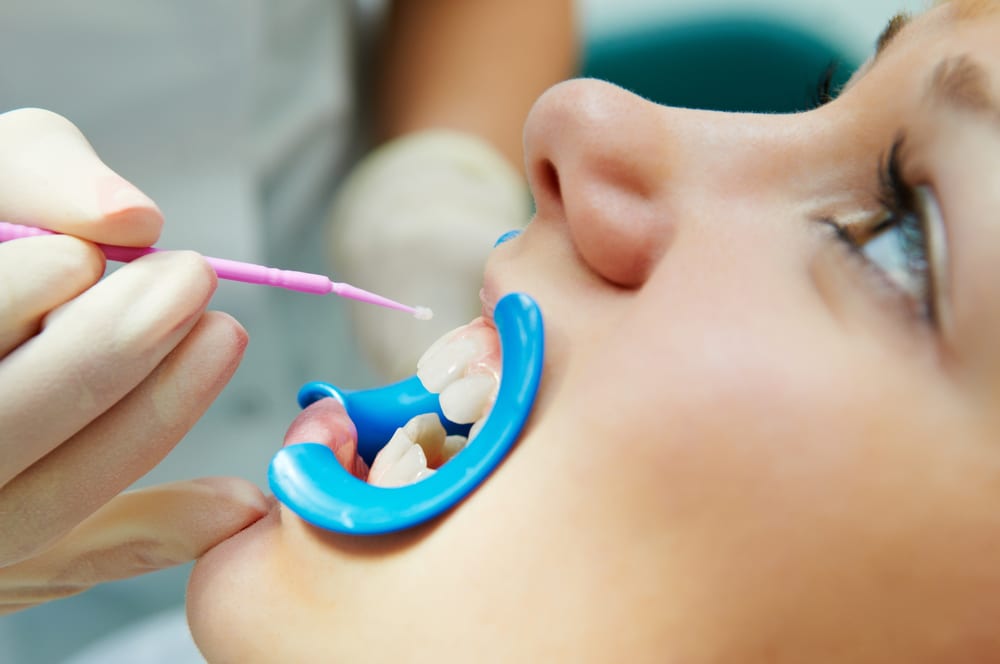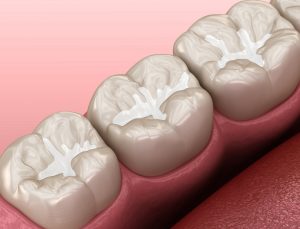What is Dental Sealants

Why Sealants
Application Method
Your dentist will review your child's or individual medical history to ensure safe treatment.
As the dentist explains the techniques and advantages of this procedure, you can ask questions to ensure you fully understand it and possible hazards.
In order to keep the teeth clean and dry & to avoid cross contamination a rubber dam
The tooth's surface is roughed with an acid solution that helps the sealant attach to it.
To fill up the grooves in the tooth, the sealant is applied by painting it on the enamel of chewing surface of teeth .
Maintenance
You will be given instructions on how to maintain your sealants, including a focus on their importance of regular dental checkups.

Concerns and Safety
Restricted Protection: Sealants only protect the chewing surface; they do not cover the spaces between teeth.
Follow up is Mandatory: Scheduling periodic dental checkups is important for checking for wear or leakage that may reduce the efficiency of the sealant.
Delaying Treatment: The risk of cavities and tooth decay increase if sealants are not applied, requiring additional and costlier dental procedures later into the future.
Substitutes for Sealants
Even though sealants are an excellent option to prevent cavities, there are additional options too, like fluoride treatments and fissurotomy, that expose dental grooves for cleaning. Each option has perks, so it's crucial to carefully evaluate each one in consideration of each individual dental health problems.
Have Questions About Crowns?
FAQs
Dental sealants: what are they?
Dental sealants are thin, protective coatings that are applied to the chewing surfaces of molars and premolars teeth to prevent tooth decay. These thin coating layers are placed to the pit and fissures, blocking food particles and plaque from sticking to the pit and fissures.
Sealants: How long do they last?
For up to ten years, sealants can keep teeth free from decay, but during routine dental checkups, they must be inspected for chipping & wear offs. They can be reapplied foe continued protection.
Do kids only need dental sealants?
No, adults without fillings or decay in their molars can be benefitted from sealants, however they are especially helpful for kids and teenagers who are more likely to get cavities.
Can cavities be covered with sealants?
Teeth that are in good health and do not have decay are usually sealed. Larger cavities need dental fillings or other procedures.
To what extent do dental sealants help prevent cavities?
Studies show sealants can prevent up to 50% of cavities for four years after being applied, also lowering the risk of decay in molars by 80% right away.
Does receiving sealants hurt during the procedure?
Sealant application is a painless procedure. As there’s no drilling or needles are used in this process. After cleaning and preparing the tooth with a specific solution, the sealant is applied and exposed to light to solidify it.
Is fluoride being replaced by sealants to prevent cavities?
No, fluoride and sealants complement each other to protect teeth. Sealants offer additional protection for the pitted and grooved portions of teeth, while fluoride helps shield all surfaces of teeth from decay and cavities.
What to do, If sealants chip off?
Firstly, inform the dentist . Dentists will reevaluate to see the necessity of sealant reapplication.
How can I be certain that my sealants survive longer?
Using fluoride toothpaste twice a day, regular flossing & refraining from chewing on hard things that could chip the sealants & lastly Visiting dentist to keep in check with sealant Helps in maintaining proper dental hygiene.
Do sealants have any adverse effects?
No.they don’t have any notable adverse effects. They are a reliable and secure method of preventing dental decay. When the sealant is first applied, some people may experience an unusual taste but it soon goes away.
Can sealants be seen when I grin or speak?
When you talk or smile, the back teeth with sealants—which might be clear or white are invisible.

